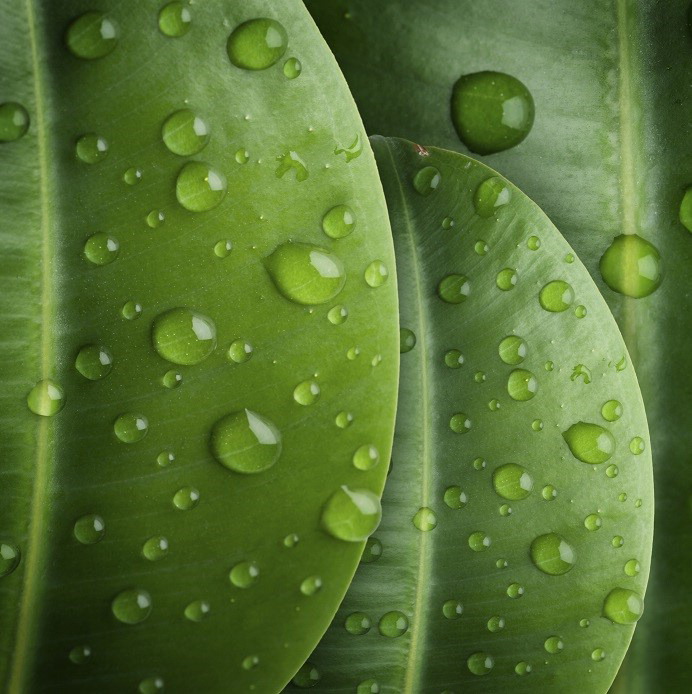In this project, the PI Dr. Góes-Neto and his team performed a study of the diversity of fungal communities associated to native
Hevea brasiliensis (Hb) in the Brazilian Eastern Amazon. The first stage involved isolating, preserving, and identifying endophytic fungi from Hb leaves and sapwood by culturing. The study areas included Anavilhanas National Park (ANP) and Caxiuanã
National Forest (CNF). In the second stage, they determined the Hb foliar mycobiome by amplicon metagenomics (metabarcoding), with the study areas being Caxiuanã National Forest (CNF) and Tapajós National Forest (TNF).
A total of 335 fungal strains (161 from ANP and 174 from CNF) were adequately isolated in pure culture, which at the time of the final report in 2016 comprised the first biotechnological product of this work: a living endophytic fungal culture collection from the rubber trees collected in the these study areas in Eastern Amazonia, which can be a source of potentially new bioactive natural products. The vouchers (testimony specimens) were preserved in sterile distilled water and stored in CCMB (Culture Collection of Microorganisms of Bahia) (UEFS). The second biotechnology product of the project was the genomic DNA bank of all the isolates preserved in the CCMB. This genomic DNA samples, stored in FungiBrBOL (Brazilian Fungi Barcode of Life) gDNA bank, can be further explored to search protein-coding genes that code for new enzymes with possible industrial applications. All the gDNA bank samples were PCR amplified using the selected primary barcode region for fungi (nrITS, nuclear ribosomal internal transcribed spacer) as the target genomic region and sequenced (traditional Sanger sequencing). The third biotechnological product of the project is the set of all sequences that will be further deposited in NCBI Nucleotide database. Initially, OTUs (Operational Taxonomic Units) were assigned to genus-level identification, since many genera are species complexes, which deserve complementary and extensive taxonomic research. The successfully sequenced and analyzed isolates from rubber tree leaves and sapwood of Anavilhanas National Park belong to the Phylum Ascomycota (Subphylum Pezizomycotina) (92.3%) and only 7.7% belong to the Phylum Basidiomycota (Subphylum Agaricomycotina). Similarly to ANP, the successfully sequenced and analyzed isolates from rubber tree leaves and sapwood of Caxiuanã National Forest (CNP) belong to the Phylum Ascomycota (Subphylum Pezizomycotina) (88.9%) and only 11.1% belong to the Phylum Basidiomycota (Subphylum Agaricomycotina).
The researchers found a highly variable fungal diversity in all distinct scales (regional, local, individual). An unexpected result of the foliar mycobiome was the detection and quantification, for the first time, of
Pseudocercospora ulei (South American Leaf Blight - SALB agent) in native asymptomatic rubber trees. This opens up the opportunity to produce potentially patentable products to be developed for commercial utilization in partnership with the rubber industry, such as a diagnostic kit for detection and quantification of
P. ulei directly from HB tissue samples. The team has also produced approximately 100 lyophilized culture filtrates of CNF endophytic fungi to perform future antagonistic bioassays against
P. ulei in partnership of Michelin Plantations in Brazil.
PublicationsFonseca PLC, Skaltsas D, da Silva FF, Kato RB, de Castro GM, García GJY, Quintanilha-Peixoto G, Mendes-Pereira T, do Carmo AO, Aguiar ERGR, de Carvalho DS, Costa-Rezende DH, Drechsler-Santos ER, Badotti F, Ferreira-Silva A, Oliveira G, Chaverri P, Vaz ABM, Góes-Neto A. 2022. An Integrative View of the Phyllosphere Mycobiome of Native Rubber Trees in the Brazilian Amazon.
Journal of Fungi. 2022; 8(4):373.
https://doi.org/10.3390/jof8040373 Fonseca, PLC, Badotti, F, de Oliveira, TFP, et al. 2018. Virome analyses of
Hevea brasiliensis using small RNA deep sequencing and PCR techniques reveal the presence of a potential new virus.
Virol J 15, 184 (2018).
https://doi.org/10.1186/s12985-018-1095-3Vaz, ABM, Fonseca, PLC, Badotti, F, et al. 2018, A multiscale study of fungal endophyte communities of the foliar endosphere of native rubber trees in Eastern Amazon.
Sci Rep 8, 16151 (2018).
https://doi.org/10.1038/s41598-018-34619-w
Libardi, N, Soccol, CR, Góes-Neto, A, de Oliveira, J, and de Souza Vandenberghe, LP. 2017. Domestic wastewater as substrate for cellulase production by
Trichoderma harzianum.
Process biochemistry, 57, 190-199.
https://doi.org/10.1016/j.procbio.2017.03.006 (A patent of the same title was deposited in the Brazilian National Patent Repository named: INPI under Access (it is In Portuguese): SOCCOL, C. R. ; LIBARDI JUNIOR, N. ; Vandenberghe, L. P. de S. ; Goés-Neto, Aristóteles . PROCESSO DE PRODUÇÃO DE CELULASES UTILIZANDO EFLUENTE SANITÁRIO BRUTO. 2016, Brasil. Patente: Privilégio de Inovação. Número do registro: BR1020160117585, título: "PROCESSO DE PRODUÇÃO DE CELULASES UTILIZANDO EFLUENTE SANITÁRIO BRUTO" , Instituição de registro: INPI - Instituto Nacional da Propriedade Industrial. Depósito: 24/05/2016.)




